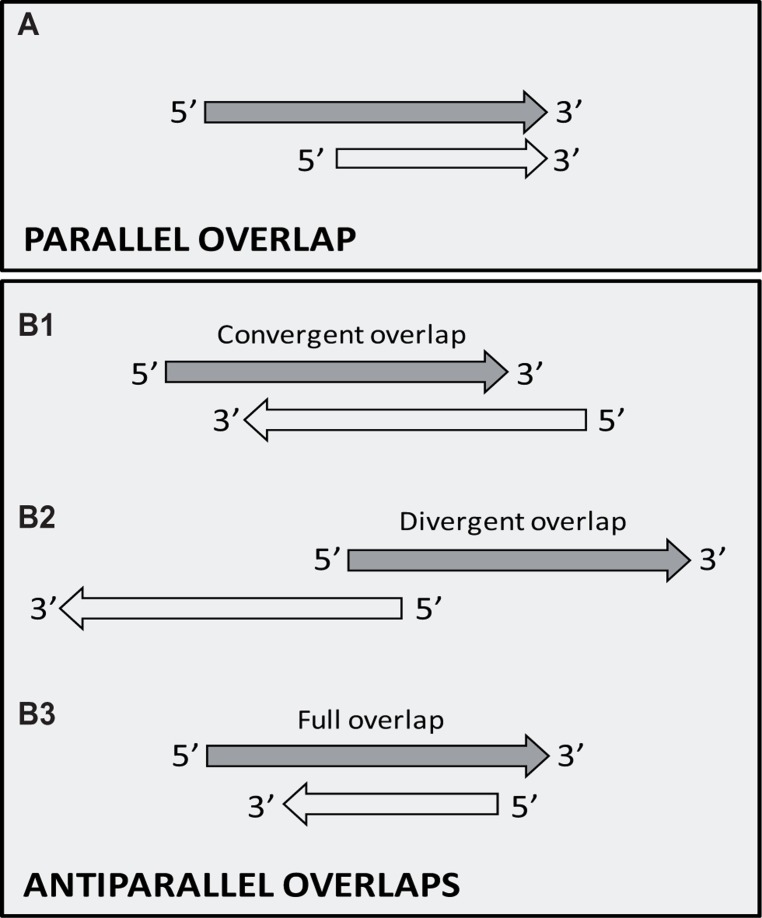FIGURE 3.
Possible overlaps producing antiparallel transcripts. (A) Tandem (parallel, head-to-tail, 5′–3′) overlap. Transcription of the upstream genes of a tandem gene cluster often fails to stop at their poly(A) signal, thereby producing long polycistronic RNA molecules. (B) Convergent (antiparallel) overlaps. (B1) Head-to-head (5′–5′) overlap between two divergently positioned genes. (B2) Tail-to-tail (3′–3′) overlap between convergently oriented genes. Two opposing genes can overlap at their 3′-UTR regions (a) or can exhibit a 3′-UTR–ORF (b), or ORF–ORF overlap. (B3) Transcriptional read-through overlap occurs when the major poly(A) signal occasionally fails to terminate by the advancing RNAP (a). The use of alternative polyadenylation provides a mechanism similar to that of transcriptional read-through for the spatiotemporal control of gene expression (b).

